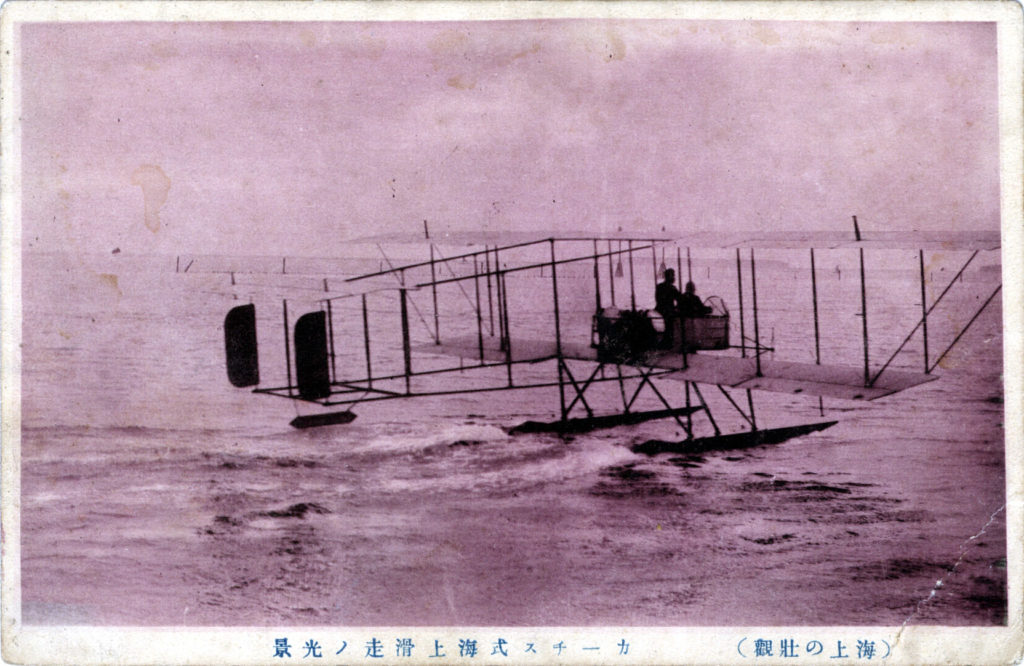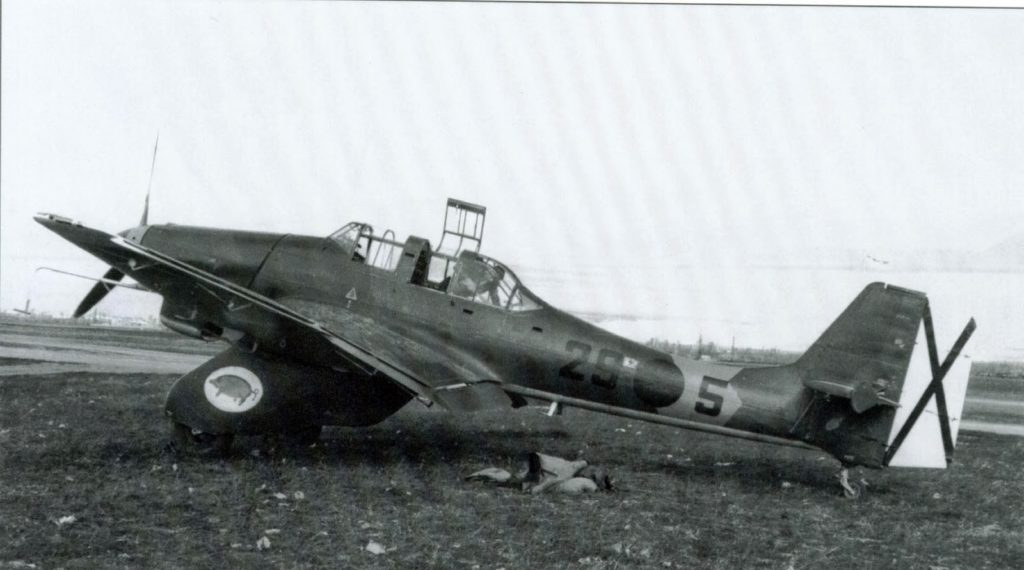A brief history…
Close air support (CAS) is the use of aircraft, both fixed wing and rotary wing to support troops primarily in defensive positions. It is not to be confused with Air Interdiction (AI), a very similar tactic but used to further an advance of friendly forces or to deter an offensive move by opposition forces. The two are often intertwined as conditions on the battlefield warrant.
The First World War would bring both tactics to fruition as all participants realized the value of these tactics. As the war ramp[ed up in 1914, aircraft were used to strafe and bomb enemy positions. The lack of a concerted, well planned offensive effort would lead to marginal but recognizable effectiveness. The dawn of air power was about to change warfare for all time.
Beginning in 1914 aviators wold strafe and bomb enemy positions. The Japanese utilizing four MF7 seaplane variants would bomb and strafe German troops and Naval vessels during the siege of Tsingtao. Beginning October 31, 1914 with a naval barrage coupled with aerial sorties using bombing and strafing attacks against German defenders. The Germans would capitulate as they ran out of ammunition November 7, 1914.

In 1916 the Allies began the first real CAS doctrine; during the Battle of the Somme British flyers first flew surveillance operations before strafing German positions. The effects were dramatic as both sides of the conflict began to develop and utilize CAS operations. In 1917 the British introduced the first air frame (an F.E.2b) dedicated to ground attack; namely trench strafing (CAS); and ground strafing (AI), the attacking of troops and targets away from front line positions. The Germans would respond with development of the Junkers J.I. to counter the British innovation but both adversaries used various aircraft in addition to the airframes developed for CAS and AI.
CAS used in conjunction with a ground assault by the British in the Sinai and Paletine campaign of 1918 would rout the Turks resulting in the occupation and partitioning of Turkish holdings in the Middle East by the end of the First World War. British air power would dominate much of the Middle East throughout the Inter-War period.
The Spanish Civil War was a training ground for German aviation as CAS tactics were improved in addition to Dive Bombing. US Marine aviators were used as an intervention force to hold ground forces during the Banana Wars as they developed and perfected the effectiveness of air-ground tactics and dive bombing as a way to break up attacking forces.
CAS was viewed by aviators as among the most difficult and ineffective uses of air power as it required pilots to identify and distinguish between friendly and hostile forces. Many ground commanders felt the air power was better used as a substitute for artillery as CAS could and sometimes did cause friendly fire incidents. It would take a revision of tactics by placing personnel on the ground to direct ordinance and strafing attacks to make CAS the effective tool it would become. British officers, Major General Fuller and Captain Basi Hart were strong advocates of CAS. Hart would describe what would come to be called Blitzkrieg tactics proposing, “actual ‘offensive’ support must come from as even more mobile artillery moved alongside. For this purpose the close co-operation of low-flying aircraft is essential”.
The German military took notice of CAS and developed aircraft for that purpose, principally the Junkers JU-87, called the “Stuka”. The Spanish Civil War turned out to be a training ground for Stuka pilots of the “Condor Legion”. The effectiveness of dive bombing gave the Germans a terror weapon that also performed as a superb tactical weapon. General Heinz Guderian used CAS in concert with his tanks as a way to use the speed of Blitzkrieg to dominate the battlefield.

British and French forces were demonstrably poor in the use of CAS in the early months of the Second World War; the British would remedy this situation during the North African Campaign. The use of forward air controllers using radio to communicate with the pilots reduced the chances of friendly fire and was instrumental in directing the pilots to targets, some very close to the front lines. Even so, friendly fire incidents continued throughout the African campaign and continued to plague units during the Sicily and Italian campaigns.
The USA entered the Second World War totally unprepared for CAS and clinging to a doctrine of “Air Superiority” and “Strategic Bombing” that the top brass deemed sufficient to win the war without troops on the ground. The USAAF directed priorities for tactical aviation was first up as “Air Superiority”, secondly “Air Interdiction” and thirdly, “Close Air Support” thereby placing little value in tactical aviation.
Brigadier General Elwood R. (Pete) Quesada began to polish CAS tactics in North Africa and by the time the IX Tactical Air Command entered the Italian campaign in supp;ort of the First US Army. tactics were being developed that would carry over to the invasion of France. Among his many innovations was “Armored Column Cover”, a system that utilized a continual canopy of fight-bombers during major offensives by armor. Radio contact between pilots and tank commanders and rotating p;ilots to armored groups led to greater efficiency as the two became familiar with CAS operations.

Brigadier General Otto Weyland in command of the XIX tactical Air Command was instrumental in General Patton’s Third Army rapid advance across France causing Patton to call Wayland “the best damn general in the Air Corps”.
Notable aircraft that performed CAS duty in the European and African theaters of WWW2: the Junkers JU 87 Stuka; the Hawker Hurricane; the P-47 Thunderbolt; the A-36 Apache and the Ilyushin IL-2 Sturmovik.
In the Pacific Theater CAS was used by Navy and Marine pilots to dislodge Japanese troops from caves and tunnels during the later stages of the war. F6F Hellcats and F4U Corsairs were used to implement CAS and were often used as artillery in the absence of Naval gunfire.
Border clashes between Soviet and Japanese forces cemented for the Soviets the value of CAS aircraft. The Ilyushin IL-2 Sturmovik would be highly valued by Stalin. He said of the Sturmovik, “They are as essential to the Red Army as air and bread”.

The Korean War started in the summer of 1950; while the Marine Corps continued the tradition of CAS, the newly formed US Air Force had gradually gravitated away from CAS relying heavily on strategic bombers and jet interceptors.
Colonel Harold Johnson, commander of the 8thy Cavalry Regiment, 1st Cavalry Division said of CAS… “If you want it, you can’t get it. If you can get it, it can’t find you. If it can find you, it can’t identify the target. If it can identify the target, it can;t hit it. But if it does hit the target, it doesn’t do much damage anyway”.
As a result of the poor showing the USAF would begin to require pilots to serve 80 days with ground units as Forward Air Controllers, greatly improving the morale of ground troops and forcing CAS to an acceptable level of operation.
CAS aircraft used in the Korean conflict: the Douglas A-1 Skyraider; the Chance Vought F4U Corsair and the Royal Navy’s Hawker Sea Fury.

The VietNam War solidified the helicopters role as a Close Air Support aircraft. It would be used by all the military services and even the venerable B-52 was used as a CAS platform. The Army would gain control of its own CAS as gunships and attack helicopters became the leading platform for CAS in the VietNam conflict. Marine aviation was always designed to be Close AirSupport so it’s record was exceptional. In addition to the Douglas A-1 Skyraider and various helicopters, the addition of Douglas AC-47 Spooky; the Fairchild AC-119 and the venerable AC-130 made CAS even more deadly.
Recent and ongoing Middle East conflicts have used such diverse assets as: the F-16 Fighting Falcon; Mirage 2000D, British designed Harriers and Tornados; the F/A 18 Hornet and the never to be forgotten and loved by ground troops A-10 Thunderbolt in the role of CAS aircraft.

Longevity and upgrades to the A-10, the C-130 and the B-52 keep these treasured assets in the Close Air Support inventory for the foreseeable future.
Walt Mow 2021
